20 jaw-dropping images from NASA's powerful new James Webb Space Telescope

The James Webb Space Telescope drifts away from the rocket's last stage on December 25, 2021. This is the last time a camera will capture Webb up close.NASA TV
- NASA's James Webb Space Telescope launched one year ago and quickly revolutionized space imagery.
- Webb's images reveal planets, galaxies, nebulas, and pillars of newborn stars in infrared light.
From day one of observing the universe, the James Webb Space Telescope has been snapping gorgeous pictures of deep space.
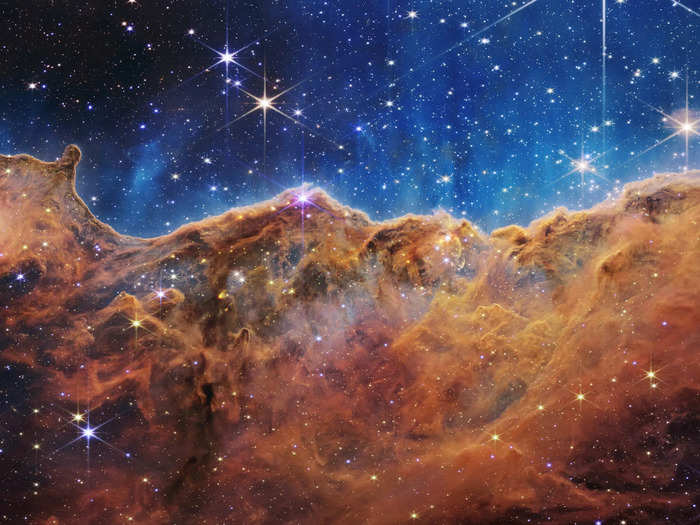
The star-forming region NGC 3324 in the Carina Nebula, which Webb captured in infrared. NASA, ESA, CSA, STScI
The telescope uses infrared light, allowing it to peer past clouds of dust and gas in deep space.
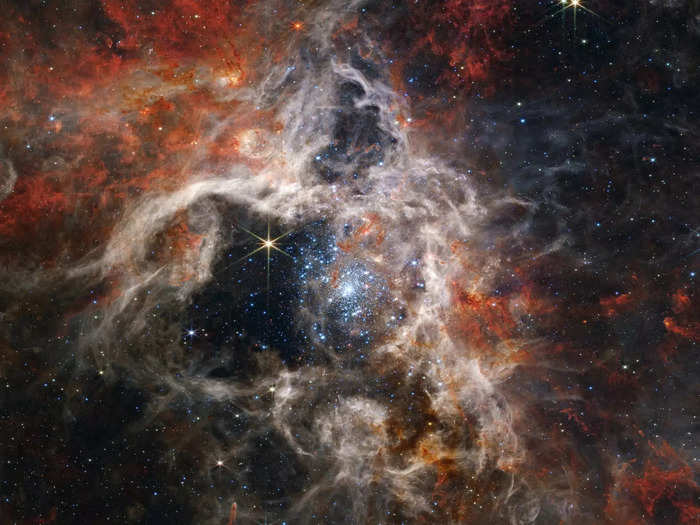
On September 6, NASA released an image of the Tarantula Nebula taken with Webb's infrared instruments. NASA, ESA, CSA, STScI, Webb ERO Production Team
Webb is about 100 times more powerful than NASA's previous landmark space observatory, Hubble.
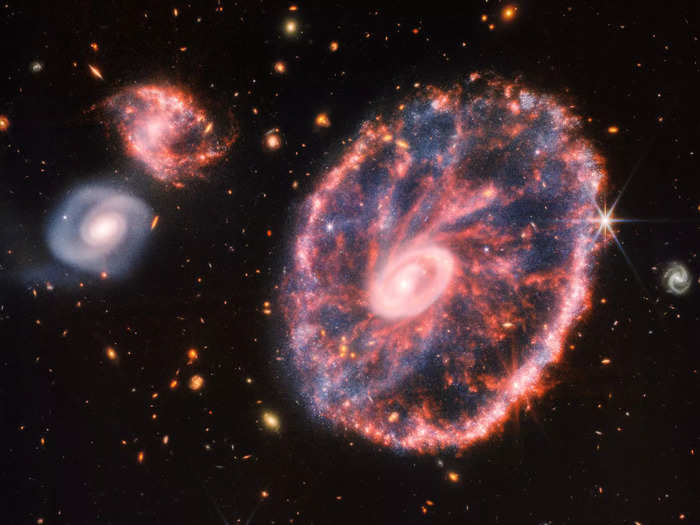
The Cartwheel Galaxy, which is around 500 million light years from Earth, imaged by Webb. NASA, ESA, CSA, STScI and Webb ERO Production Team
That's why Webb can peer deeper into space — and further back in time — than any prior telescope. Its first deep-field image (shown here) reveals some of the earliest galaxies in the universe.
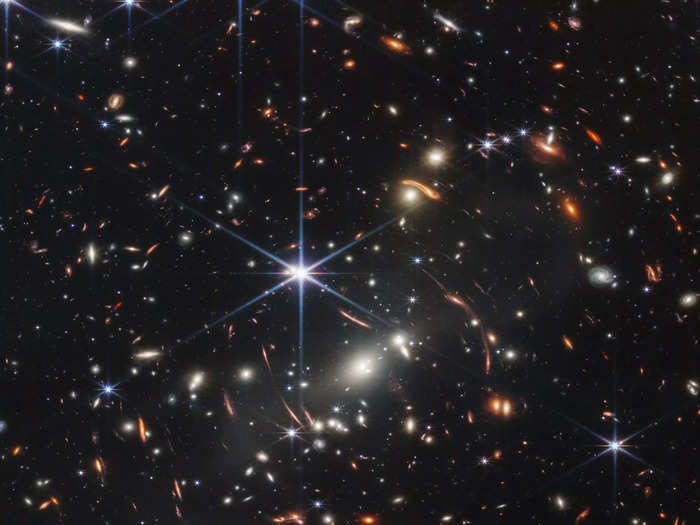
The James Webb Space Telescope's first deep field infrared image, released on July 11, 2022. NASA, ESA, CSA, and STScI
By gathering infrared light, Webb is able to cut through cosmic dust and see far into the past, to the first 400 million years after the Big Bang.
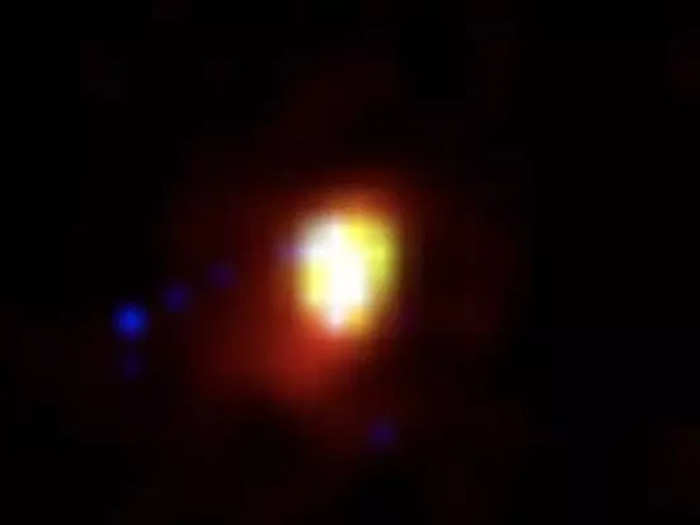
Color image of CEERS-93316, a galaxy researchers believe emerged only 235 million years after the Big Bang. CEERS/UOE/SOPHIE JEWELL/CLARA POLLOCK
Webb shed new light on the iconic Pillars of Creation — giant clouds of gas and dust that constantly birth new stars. In near-infrared light, thousands of stars burst through, including newborn red stars.
The Pillars of Creation, imaged in Webb's near-infrared-light view. NASA, ESA, CSA, STScI; Joseph DePasquale (STScI), Anton M. Koekemoer (STScI), Alyssa Pagan (STScI).
In mid-infrared, the dust itself takes center stage.
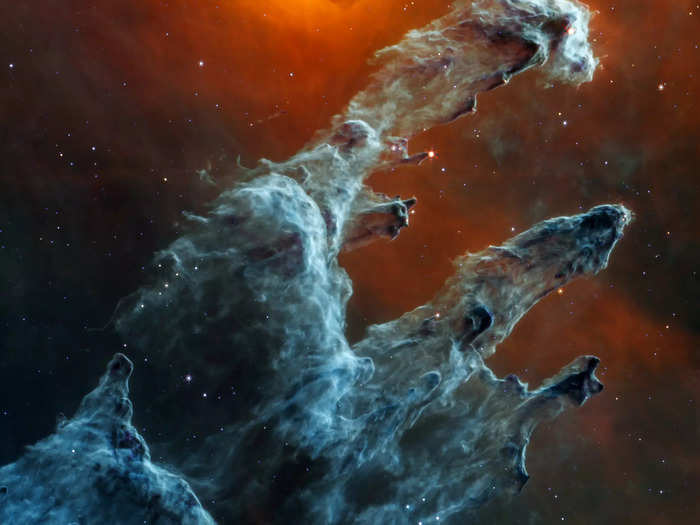
Webb's mid-infrared view of the Pillars of Creation. NASA, ESA, CSA, STScI, Joseph DePasquale (STScI), Alyssa Pagan (STScI)
By combining the data from those two images, NASA rendered a completely new, ethereal portrait of the pillars.
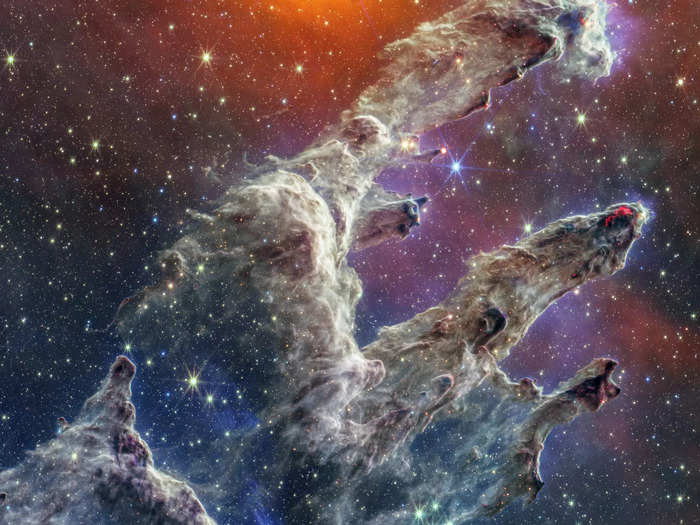
A combination image of the Pillars of Creation from two cameras aboard Webb, in mid-infrared and near-infrared. SCIENCE: NASA, ESA, CSA, STScI; IMAGE PROCESSING: Joseph DePasquale (STScI), Alyssa Pagan (STScI), Anton M. Koekemoer (STScI)
In July, Webb captured the Southern Ring Nebula, an enormous cloud of dust and gas 2,000 light-years away from Earth.
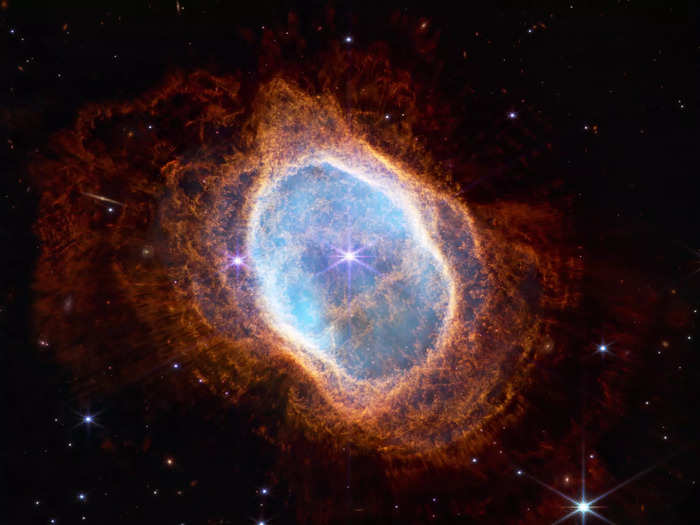
The Southern Ring Nebula, which Webb captured in near-infrared light. NASA, ESA, CSA, STScI
Tendrils of star-forming regions connect the cores of these two merging galaxies and make them much brighter in infrared.
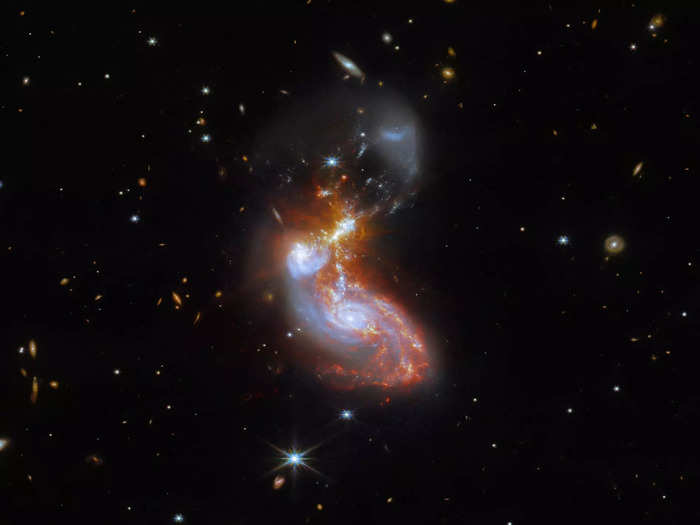
A merging pair of galaxies that Webb captured. ESA/Webb, NASA & CSA, L. Armus, A. Evans
Webb has also pivoted to focus on our solar system, blowing astronomers away with this eerie infrared portrait of Jupiter.
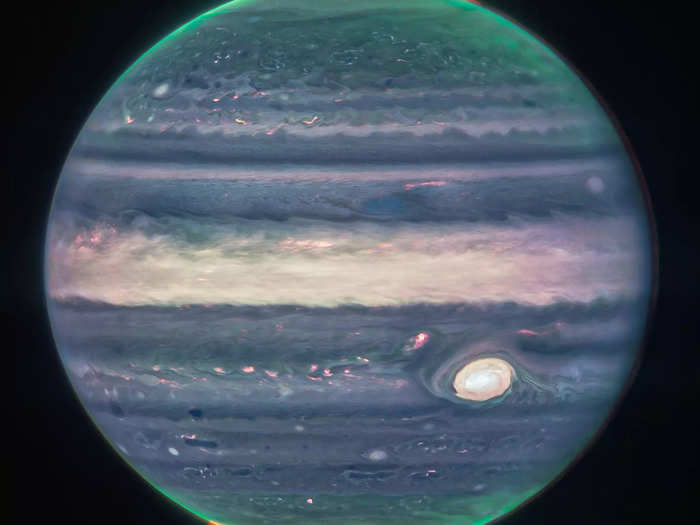
Webb's NIRCam composite image of Jupiter. NASA, ESA, Jupiter ERS Team; image processing by Judy Schmidt
The telescope also captured the faint rings circling Jupiter and auroras glowing at its poles.
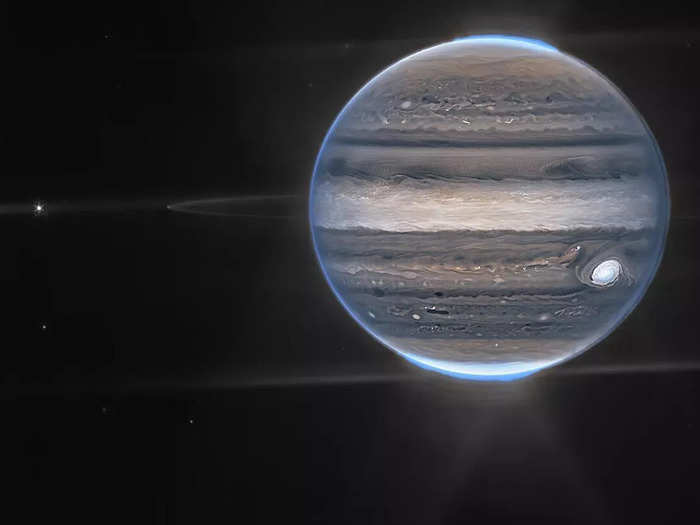
A wide-field view of Jupiter that Webb captured. NASA, ESA, Jupiter ERS Team; image processing by Ricardo Hueso (UPV/EHU) and Judy Schmidt
Jupiter's moon Europa shined brilliantly in Webb's infrared. Scientists think Europa has a saltwater ocean, deep below its thick ice crust, which could harbor alien life.
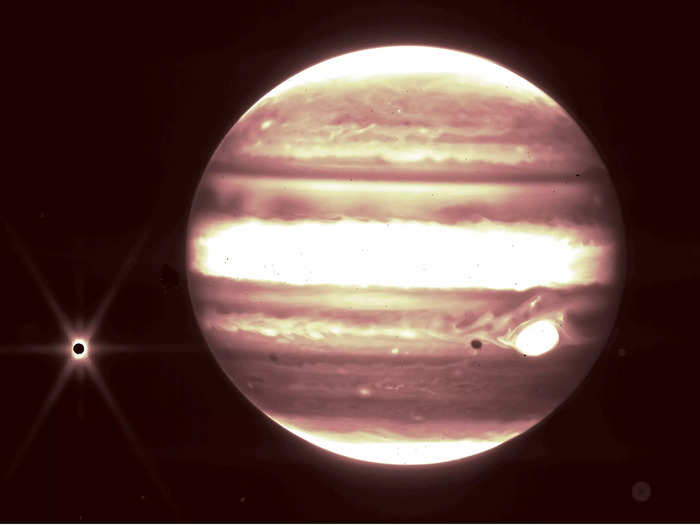
Jupiter and its moon Europa, left, as seen through the James Webb Space Telescope's NIRCam instrument. NASA, ESA, CSA, and B. Holler and J. Stansberry (STScI)
Webb even spotted Neptune's rings, which are a rare sight.
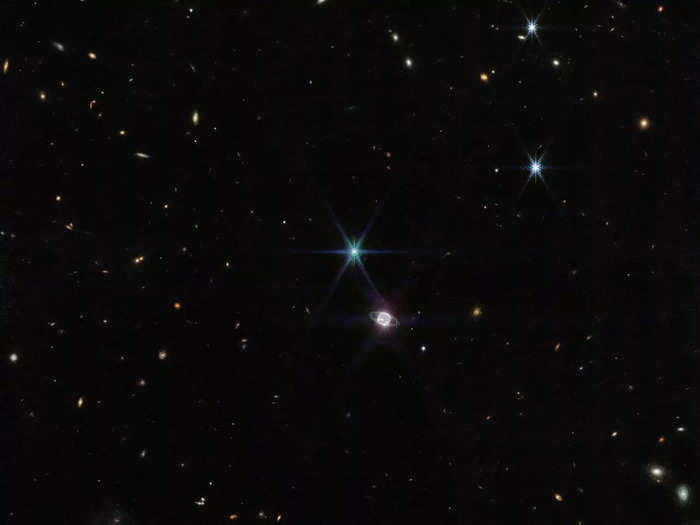
The Neptune system, which Webb imaged. NASA, ESA, CSA, and STScI
It's the best view of the planet's dusty rings since NASA's Voyager 2 spacecraft flew by Neptune in 1989.
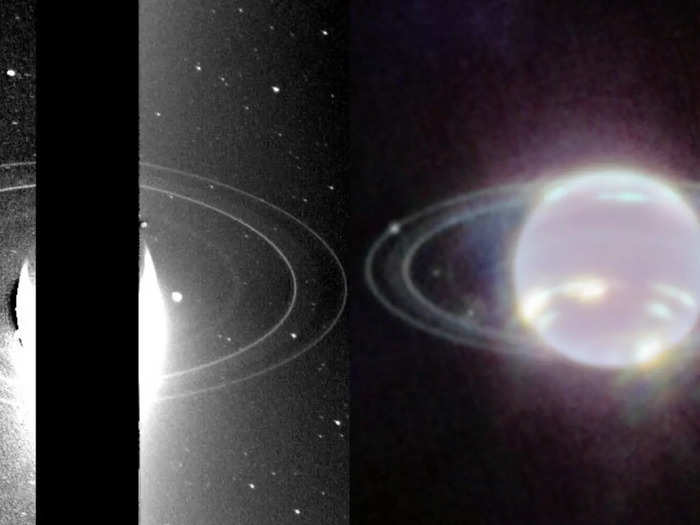
On the left, an image of Neptune's rings that Voyager 2 captured in in 1989. On the right, Neptune's rings that Webb imaged in infrared. NASA/JPL/ESA/STScI
The new image also shows seven of Neptune's 14 known moons. The bright blue feature that looks like a star is actually Neptune's largest moon, Triton.
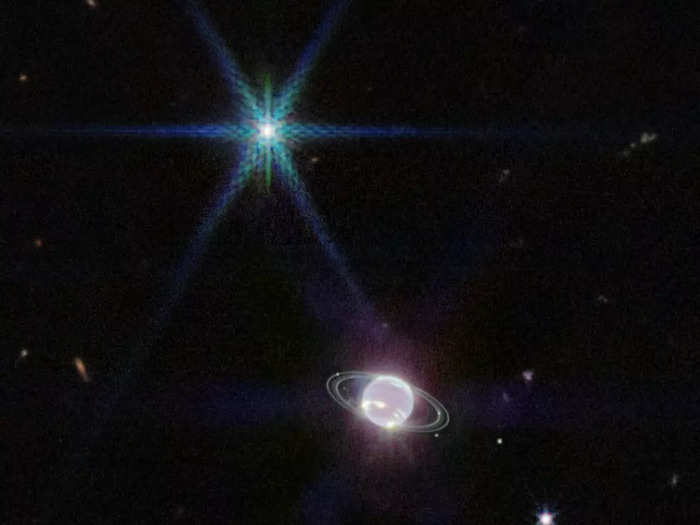
Zooming in on Neptune shows Webb captured its rings. Neptune has 14 known satellites, and seven of them are visible in this image. NASA, ESA, CSA, and STScI
The infrared telescope also took images of Saturn's largest moon, Titan. It's the only moon in our solar system that has a dense atmosphere — four times denser than Earth's.
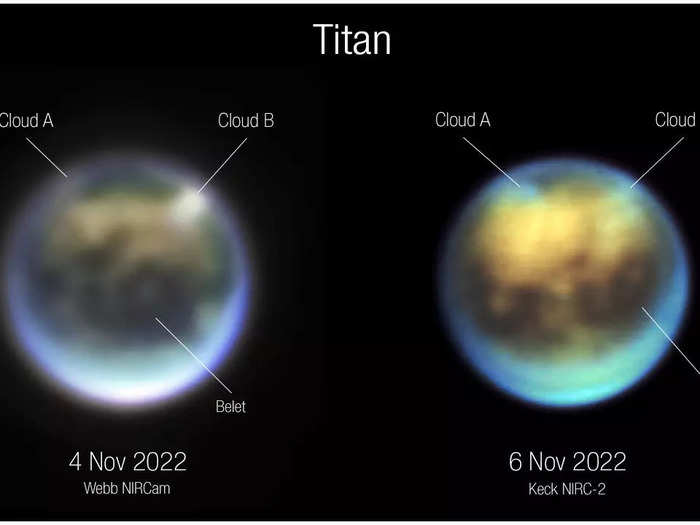
Evolution of clouds on Titan over 30 hours between November 4 and November 6, 2022, as seen by Webb's near-infrared camera on the left. NASA, ESA, CSA, Webb Titan GTO Team/Alyssa Pagan (STScI)
Webb captured NASA's Double Asteroid Redirection Test spacecraft successfully slamming into the asteroid Dimorphos, as part of the first-ever planetary defense test.
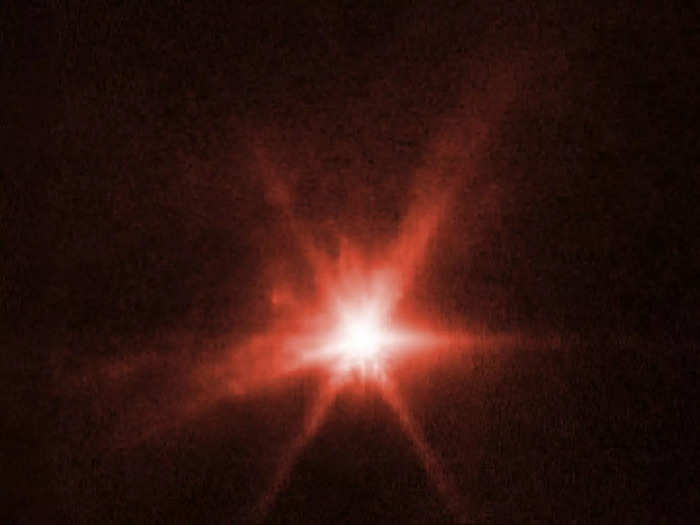
This image from NASA's James Webb Space Telescope's Near-Infrared Camera instrument shows Dimorphos, the asteroid moonlet in the double-asteroid system of Didymos, about 4 hours after NASA's Double Asteroid Redirection Test made impact. NASA, ESA, CSA, Cristina Thomas (Northern Arizona University), Ian Wong (NASA-GSFC) IMAGE PROCESSING: Joseph DePasquale (STScI)
In just over five months of scientific operations, Webb has captured several beautiful shots of the cosmos.
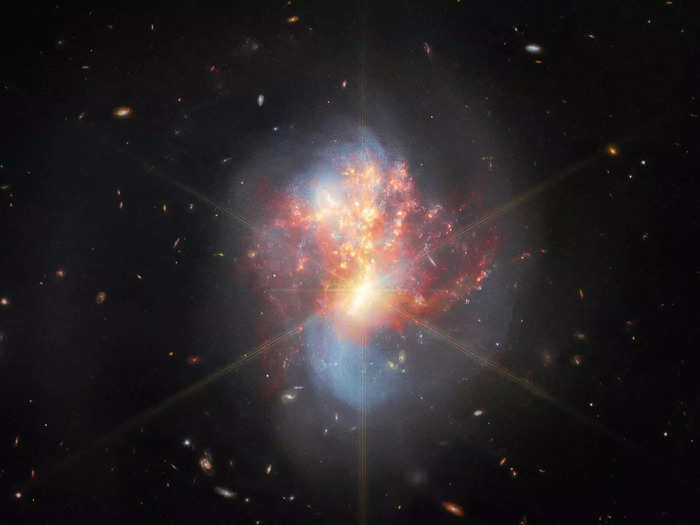
An entwined pair of interacting galaxies, around 270 million light-years from Earth, imaged by Webb. ESA/Webb, NASA & CSA, L. Armus & A. Evans; Acknowledgement: R. Colombari
Scientists stress it's just the beginning for NASA's most powerful telescope.
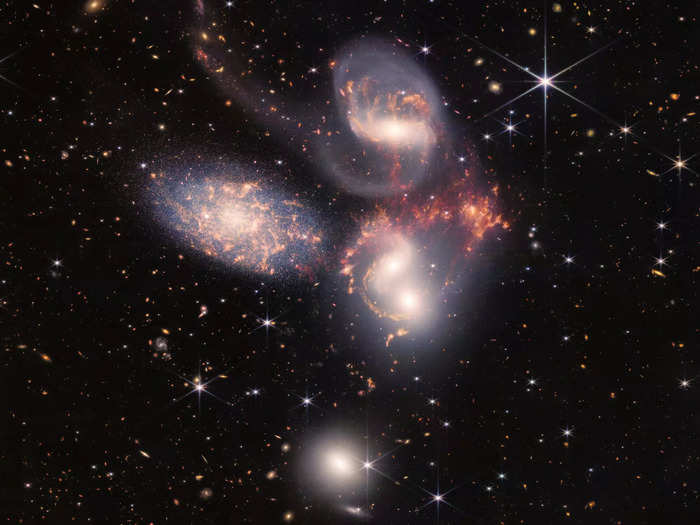
Stephan's Quintet is shown here taken by the James Webb Space Telescope. NASA, ESA, CSA, STScI
Popular Right Now
Advertisement